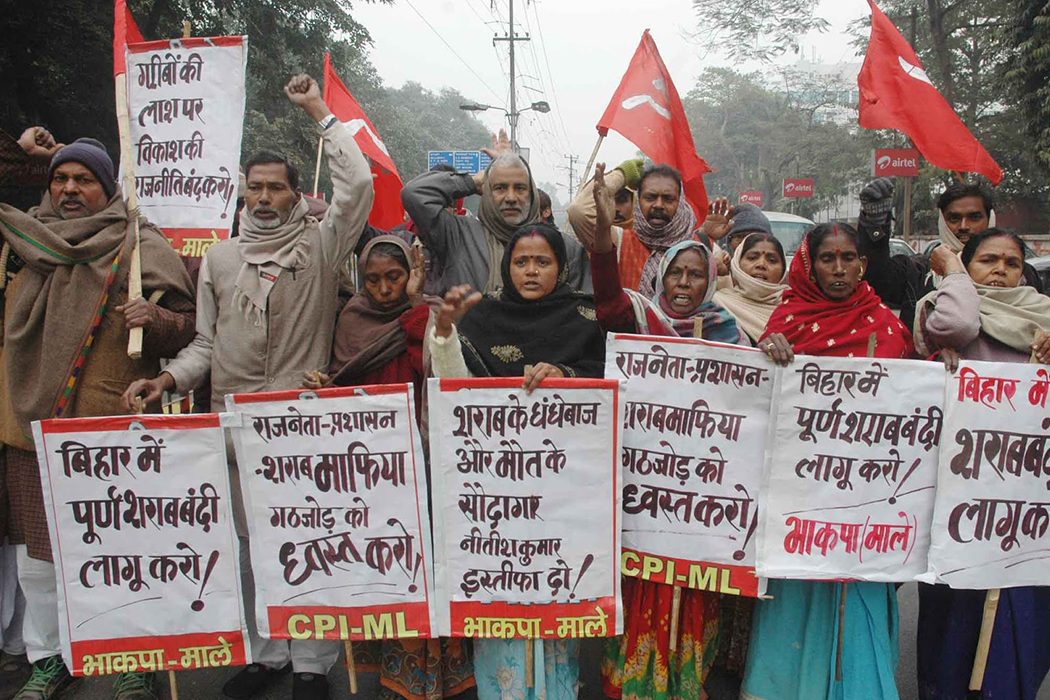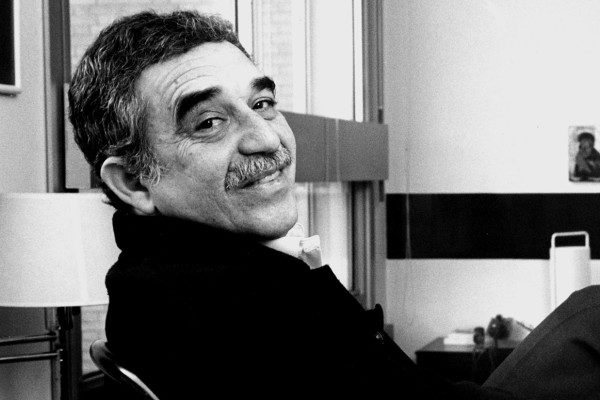Bihar’s excise department needs major reform if prohibition is to be effectively implemented, says Binit Priyaranjan.
On 30 March, answering a long-standing demand raised by women and social activists—and keeping a campaign promise made by chief minister Nitish Kumar—the Bihar government amended the state’s excise laws to prohibit the sale and purchase of country liquor from 1 April onwards. Four days after the promulgation of the partial prohibition, following “the tremendous response of people, particularly women and children, against liquor in Patna and other towns”, the chief minister announced that the ban would be extended to all forms of liquor throughout the state with immediate effect. The entire government machinery even pledged to “stay away from alcohol”, not just in the state, but on principle.
The total ban—on selling, consumption and possession of any type of alcohol—makes Bihar India’s fourth “dry state”, after Gujarat, Kerala and Mizoram. The state had previously attempted prohibition in 1977 under the Janata Party government of Karpuri Thakur, but the decision was revoked two years later by Thakur’s successor Ram Sunder Das because of corruption and bootlegging.
Between the bans, however, the alcohol industry grew from a meagre Rs 75–80 crore in revenue in 1979 to a behemoth that boasts of four times as many retailers and revenues close to Rs 3,700 crore in 2015, about 15 percent of the state’s budget. One can imagine how much the drinking population grew in that time.
Between the bans, however, the alcohol industry grew from a meagre Rs 75–80 crore in revenue in 1979 to a behemoth that boasts of four times as many retailers and revenues close to Rs 3,700 crore in 2015, about 15 percent of the state’s budget.
“Our careers in the department started with prohibition and almost ended with it,” says Binod Kumar Jha, a retired Deputy Commissioner of Excise and Prohibition in the state government, referring to himself and his colleague Panchu Patra, whom I sat down with in order to understand the varied nuances of the ban, which—at least on the surface—sounds like the government shooting itself in the economic foot. “We were recruited after a hearing by the Bihar High Court ruled in our favour,” he says, “since the government had earlier aborted recruitment because the ban on alcohol, in lieu of which we had been recruited, was lifted before we joined.” Since then, the two served all over Bihar in the Excise Department—“I almost never heard the department being called by its full name,” Jha tells me—before retiring last year as deputy commissioner and assistant commissioner, respectively.
So how did we get to a situation warranting such a radical move? Jha explains the move had been coming for a while, though the total ban just four days after the country liquor ban was unexpected. “The promise of the ban was a big feature of Nitish’s campaign manifesto leading up to the election in 2015, and following his win he has implemented it.” The public support for the ban at a time not much is going the chief minister’s way in Bihar might have encouraged Kumar to extend the ban, but Jha tells me that his government’s 2006 policy of introducing “composite” liquor shops contributed immensely to the proliferation of alcohol abuse that necessitated the ban.
“Composite liquor shops,” Patra explains, “are shops that allow the sale of Indian Made Foreign Liquor (IMFL) and beer apart from country liquor.” These shops made cheap alcohol very accessible, he says, in an attempt to generate more revenue. Since their introduction, excise revenue from alcohol increased sevenfold, and the number of liquor shops increased by almost 2,000 in seven years. Every town and village in the state got its own liquor shop in the process.
In a state almost devoid of mining and tourism as sources of income, excise revenue was seen as a crucial source of revenue to fund the agenda of development that brought Kumar to power.
Jha says their department “was conceptualised to regulate a substance of abuse’s distribution, since the vice, it was believed, could not be entirely eliminated and so needed to be regulated and taxed. But it was looked at as a source to boost revenue by the Nitish government prior to the 2015 election, leading to the problem.” In a state almost devoid of mining and tourism as sources of income, excise revenue was seen as a crucial source of revenue to fund the agenda of development that brought Kumar to power.
Unprecedented access, then, is why Bihar found itself in its alcohol-abuse problem. So does that mean cutting off access will help curb the problem, even at the steep economic cost involved? The retired officers say that they remain sceptical. “Theoretically, a lack of access leads to a lack in consumption, especially among the poorest drinkers,” Jha explains. “However, it is one thing to impose a ban, quite another to implement it.”
He points out that Bihar’s geographical location, with land borders with West Bengal, Jharkhand, Uttar Pradesh and Nepal, makes prohibition a harder job than in Gujarat or Kerala, whose coastal location means fewer borders to police. “In fact,” Patra says, “trucks transporting alcohol to the Northeast or Madhya Pradesh that pass through Bihar have a history of being stolen and their cargo substituted with alcohol of suspect quality.”
“Out of five posts for Deputy Commissioner in Bihar, only three are occupied,” he explains, adding that nearly half of the 1,500 posts at constable level in the department remain vacant, and that such conditions of understaffing exist at all departmental ranks.
“Add to that the woeful state of the force whose sole purpose is to secure prohibition,” Jha chimes in. The Department of Excise and Prohibition has not seen new recruitment since 1980. “Out of five posts for Deputy Commissioner in Bihar, only three are occupied,” he explains, adding that nearly half of the 1,500 posts at constable level in the department remain vacant, and that such conditions of understaffing exist at all departmental ranks. Sure, Section 47 of the Excise Act ropes in the police to help enforce the ban, but the police, he points out, has many other things on its plate. “Meanwhile, our excise force carries out the bulk of prohibition duty,” Patra adds with a wry chuckle, “with as little as a dozen personnel registered as drivers throughout the state.”
Bootlegging exists in all “dry” states, and besides the loss of revenue, the state has also lost its ability to monitor the quality of alcohol being smuggled, which could lead to cases of alcohol poisoning akin to the “hooch tragedies” that periodically take place in states with prohibition. In the light of these factors, I ask Jha whether he feels the ban justified. Personally speaking, he says, he supports the decision.
“Any welfare state as its duty must aim to curb addiction in its public, be it alcohol, marijuana or any other form of addiction,” he says, adding that “the demand for the ban existed in Bihar as social institutions were indeed suffering under the abuse of alcohol, especially the women.” However, both of them agree that the government could—and should—have prepared better for the imposition of the ban, since it was more or less a certainty if the mahagatbandhan was elected.
“Any welfare state as its duty must aim to curb addiction in its public, be it alcohol, marijuana or any other form of addiction,” he says, adding that “the demand for the ban existed in Bihar as social institutions were indeed suffering under the abuse of alcohol, especially the women.”
“Even in the five months since coming to power,” Patra says, “the government ran little by way of preparations, besides declaring 26/11 a dry day and launching a prohibition abhiyan. Instead, there should have been a surge in recruitment in the department and a rise in rehabilitation and treatment facilities for the thousands whose addiction was suddenly snapped.” According to an India Today report, per capita consumption was to the tune of 260 ml per week for country liquor and 17 ml per week for IMFL, beer and wine.
Jha explains that “the addicts have not disappeared, and their reaction should have been a concern for the government ahead of the imposition.” Although de-addiction facilities have been promised in all states, much more remains to be done on the ground, he says, and preparatory measures akin to Jayalalithaa’s announcement in Tamil Nadu of a phased prohibition before the ongoing state elections there should have been implemented. “The original blueprint of banning foreign liquor from October 2016 could have also been a better option,” Patra adds.
In conclusion, I ask, should the government be held accountable for the poorly thought out decision? Jha provides a seasoned-government-servant reply: “I would say it was a decision right in its principle, and I supported it when it was proposed, but the state’s preparation for it does leave much to be desired”.
Although de-addiction facilities have been promised in all states, much more remains to be done on the ground, he says, and preparatory measures akin to Jayalalithaa’s announcement in Tamil Nadu of a phased prohibition before the ongoing state elections there should have been implemented.
Strict implementation of the ban was promised by the CM ahead of the ban, and his commitment to the idea or its ethical stand is evidenced in his government’s pledge. Kumar has claimed that the crime rate has dropped by 27 percent since prohibition was introduced, though that figure is obtained by comparing last month to April 2015, not March 2016, and thus it is unclear how much prohibition has contributed to the drop. In any case, thorough enforcement of prohibition requires much swifter administrative reform than the government seems to be exhibiting.














